How It Works

Solomon Creek Pump Station
Stormwater pumping stations are an integral part of the flood protection system. There are a total of 13 pump stations situated on both the east and west banks of the Susquehanna River. Specifically, the Solomon Creek Pump Station is located in Hanover Township and straddles Solomon Creek where it passes through the levee. Under normal conditions, gravity flow from the creek passes directly through the station sump by way of moveable trash racks and roller gates. After exiting the station sump, the creek continues past a concrete stilling basin and along a channel to the Susquehanna River.
The Solomon Creek Pump Station straddles Solomon Creek where it passes through the levee. Solomon Creek is the largest pump station in the system and has a total pumping capacity of 320,000 gallons per minute.
Solomon Creek enters the pump station through eight (8); 7’ wide x 28’ high open steel trash racks. The purpose of the trash racks is to protect the expensive pumps from floating or partially submerged debris.
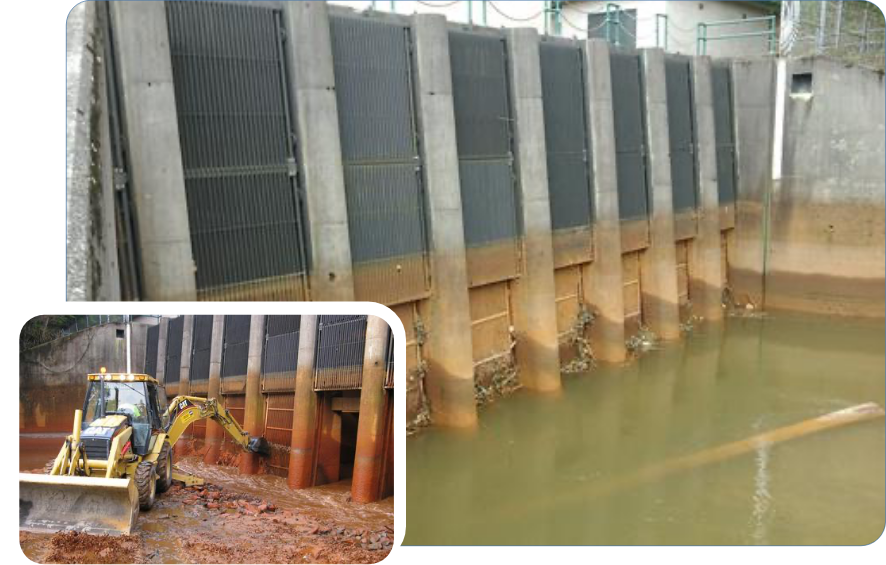
At times it may become necessary to raise some, or all, of the moveable trash racks via an overhead gantry crane to remove the accumulated trash and debris.
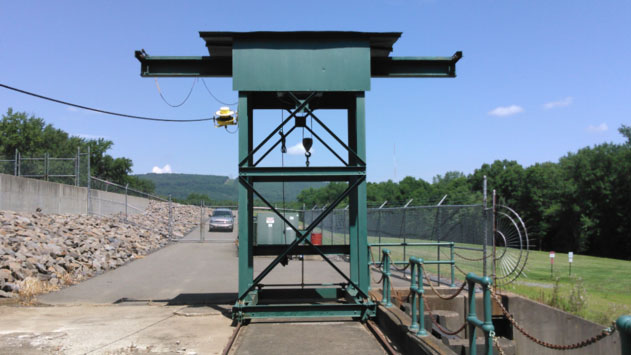
Left: The station sump, or intake chamber, is located directly below the pump motor floor. The dimensions of the sump are approximately 57′ wide x 70′ long x 28′ high for a total stormwater capacity of about 111,720 cubic feet or 835,666 gallons. Note the trash racks on the pump intake bells which help protect the pumps from floating or partially submerged debris.

Right: The station contains four (4) Johnston 80,000 GPM vertical axial-flow pumps. The pumps are driven by U.S. Motors vertical high thrust hollow shaft motors located atop the motor floor inside the stations.
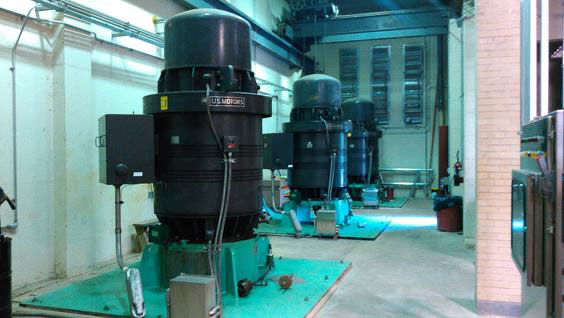
Inside the station atop the motor floor is where the Medium Voltage Motor Control Center (MVMCC) is located. The MVMCC distributes power to all the internal systems of the stations. As shown in the photo, located near the MVMCC is a Programmable Logic Controller (PLC) control panel. The PLC controls the station pumps, monitors sump water levels, pump motor data, feeder data, station alarms, and the station door security.
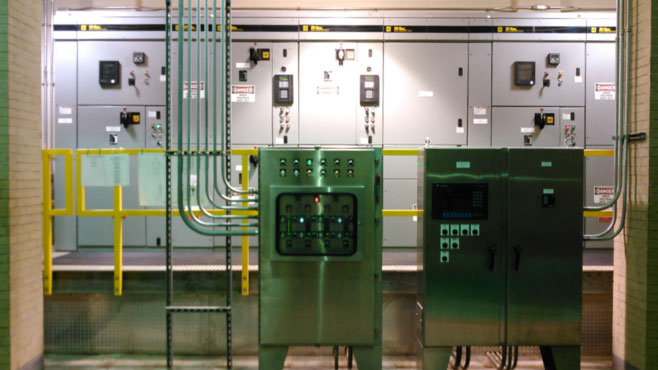
Pump discharges are carried through the sump wall by four (4) 66” diameter steel pipes which are terminated by an automated flap gate. The flap gates are located in a common elevated discharge chamber integral with the pump station. From this chamber, the pumped water flows by gravity through one of two (2) sluiceways to the stilling basin and then to the river. In the photo above, an Authority staff member is shown lubricating the hinges on the flapgate.
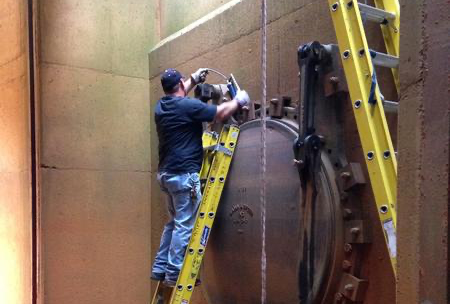
Under normal conditions, gravity flow from the creek passes directly through the trash racks and station sump and past the roller gates, into a stilling basin and along a channel to the Susquehanna River. The roller gates, or motorized sluice gates, are normally kept in the open position to allow creek flow to the river. Under river flooding conditions, the roller gates are closed to prevent the river from backing up into the protected side of the levee. In the photo above, the roller gates are in the open position and one of the two sluiceways can be seen to the right.
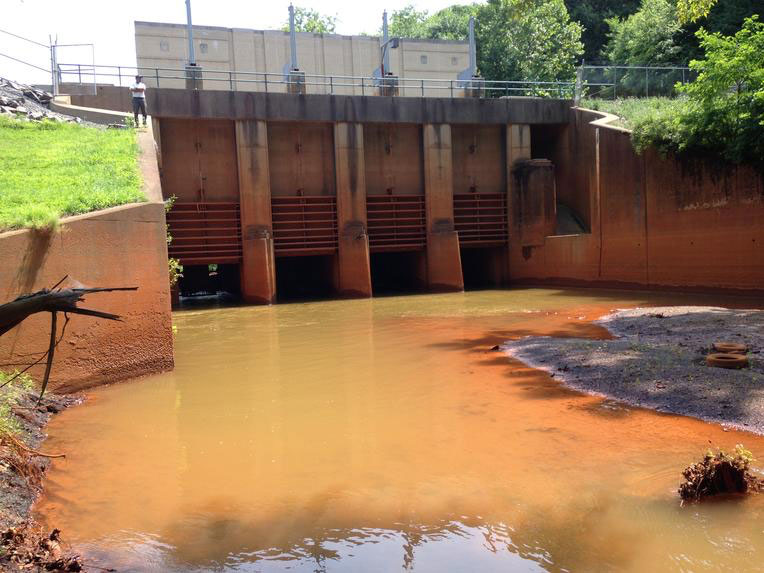
The Breslau Reservoir is located adjacent and upstream to the pump station, and is an impoundment area that can hold 1,600 acre feet (or 521,326,080 gallons) of stormwater. Under river flooding conditions, the roller gates are closed to prevent the river from backing up into the protected side of the levee. The flow from the creek then collects into the Breslau Reservoir. This reservoir acts as a buffer to allow the pumping station to store a large volume of water if the pumps cannot keep up with the flow.
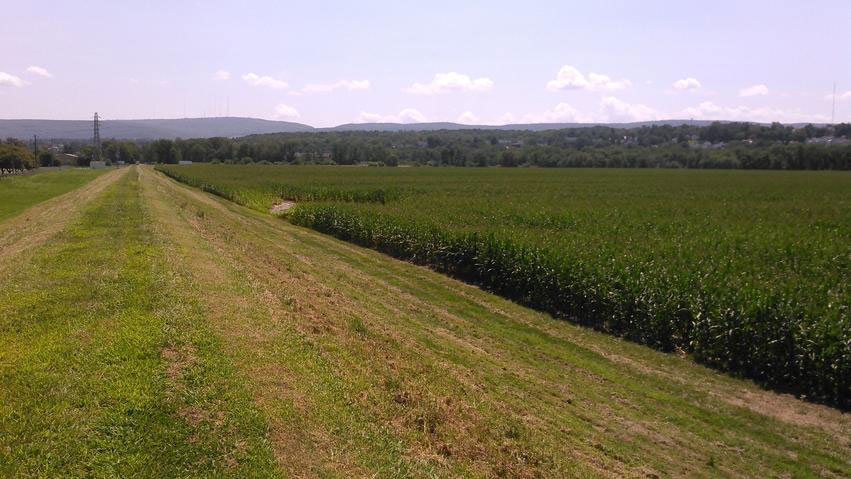
The Wyoming Valley Flood Risk Management Project (WVFRMP)
The Wyoming Valley Flood Risk Management Project (WVFRMP) is a Federally authorized flood protection system, and as such, the Authority must adhere to United States Army Corps of Engineers (UASCE) guidelines in its operation and maintenance. The USACE has produced Operation & Maintenance Manuals (O&MM) for not only the levee reaches but for the stormwater pump stations as well, including the Solomon Creek Pump Station. The roller gate operations at Solomon Creek are initiated when the river stage reaches 16.5 feet for storm events with high flows in the creek or when the river stage reaches 18 feet for events with lower flows in the creek. Depending on the storm intensity and projected river levels, all of the pumps may not be required during a given storm and high river event.
The existing WVFRMP was designed to prevent a recurrence of an Agnes-Level flood event. The project is designed to protect the communities located behind the flood protection system from Susquehanna River flooding. The Authority protects the community from loss of lives and property damage through the operation of the Solomon Creek Pump Station, as an element of the 16-mile WVFRMP along the Susquehanna River.
